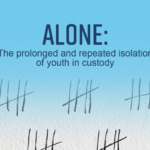On Choosing a New Electoral System
Hon. Maryam Monsef, Minister of Democratic Institutions, House of Commons, OTTAWA, ON K1A 0A6
Dear Minister Monsef,
RE: Electoral Reform
Democracy has been my life-long passion, and I believe that one of democracy’s primary elements is the process by which citizens elect their representatives. My reason for writing to you is that you have been assigned the responsibility for electoral reform. The purpose of my letter is not to recommend an alternative to our established electoral system; it is to suggest a process whereby we can consider an alternative.
Electoral reform was considered in five provinces between 2003 and 2007 without resulting in any changes. Where referenda were held on the subject, the voting rules applied to these referenda differed fundamentally from the rules by which elections are decided. British Columbia’s 2005 electoral reform referendum is an example of the inequality between the two voting processes.
British Columbia’s referendum rules called for super-majorities (60% majority in votes in 60% of the ridings) for the adoption of a chosen new voting system. In 77 of the 79 ridings (97.5%) a simple majority supported the new system. However, the 57.7% of voters who supported that change fell short of 60% super majority called for by the terms of reference for the referendum.
That referendum was held in conjunction with a general election. The election, conducted pursuant to First-Past-The-Post rules, allocated 58.2% of the seats to the leading party on the strength of 45.8% of the votes cast. The irony of the two results is that the majority lost in both instances. The 57.7% of voters who supported a change in the province’s voting system lost as did the 54.2% of voters who did not support the leading party. Put another way, a 42.3% minority won the referendum, and a 45.8% minority in the election won effective control over the province’s legislative powers and absolute control over its executive powers.
Voting is the citizens’ primary act of effective political power in a democracy. It is therefore both reasonable and judicious that a voting system change be sanctioned by citizens in a referendum. The 2005 British Columbia referendum posed this question:
Should British Columbia change to the BC-STV electoral system as recommended by the Citizens’ Assembly on Electoral Reform?
Presented in this manner, a Yes answer is a clear indication of a voter’s intent. It is a mistake, however, to interpret a No answer as the voter’s preference for the status quo. Changing the electoral system entails two questions:
a) Do citizens wish to abandon their traditional voting system?
b) If so, what other system do citizens wish to adopt?
Democracies around the world have adopted a broad range of voting systems other than the Single Transferrable Vote system offered to British Columbians and the Mixed-Member Proportional system considered in Ontario: Party List, Hagenbach-Bischoff, and D’Hondt are only some of the many proven democratic voting systems.
It is a mistake to assume that a voter’s negative response to a question such as the one asked of British Columbians in 2005 amounts to a positive response to the status quo. An either/or referendum question may leave some voters with a no-win choice. Citizens should be asked if they wish to abandon our traditional voting system before being asked about a preferred alternative. To that end I am suggesting that you consider a two-stage referendum process:
Ballot question A:
Are you in favour of retaining the First-Past-The-Post system for elections to the House of Commons?
Ballot question B:
If the majority votes No, which of the following alternatives do you support:
1. System X
2. System Y
3. System Z
This approach would allow a committee (established to examine feasible voting system options) to present citizens with two, three, or more alternatives to the status quo.
The voters’ intent would be clear if a simple majority were to vote Yes to question A. In that case the question B votes would be irrelevant. Should the majority vote No to question A, the vote counts in question B would indicate the voters’ preferences. The question B votes may be inconclusive in which case a second referendum should be held asking citizens to choose between the two leading alternatives arising out of the first referendum.
In the event of a Yes majority decision in question A, question B would give these citizens who voted to retain the established voting system the opportunity to participate in shaping the consequences of the majority’s decision.
I thank you for your consideration and look forward with great interest to your ministry’s work on this topic.
Yours truly
André Carrel
























